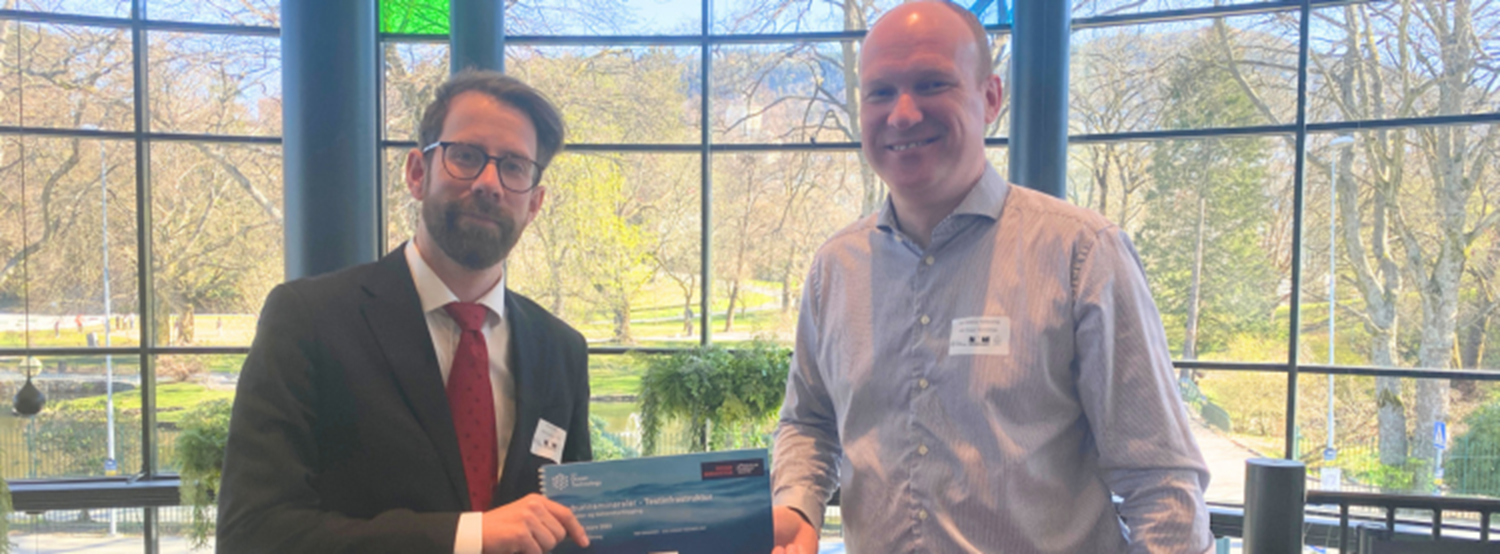Recommendation for Norwegian actions

Our report Seabed minerals – Test infrastructure, has been handed over to the ministry. Establishing a national strategy, a predictable framework and high ESG-focus are key pillars.
Seabed minerals are emerging as a potential source of minerals to help meet the growing demand resulting from the energy transition.
To strengthen the knowledge related to the resource potential and the deep sea environment and its ecosystem is key to succeed.
Test infrastructure to reduce risk
Test facilities are important to develop and test new technology and methodology. Our report has mapped the needs and possibilities for joint national test-sites and -infrastructure supporting the development of a seabed minerals value chain.
The report recommends six short term infrastructure investments:
- Upgrade of national deep sea ROV
- New national AUV
- Increased access to research vessel with AUV/ROV
- Adapt existing test facilities and coastal areas for testing of equipment for mapping and coring
- Expand test facilities for processing
- Evaluate the possibility for test area in the deep sea
Increased public-private collaboration, including models for rental/lease of industrial vessels/equipment/personnel can be a good option to acquire/increase some of this capacity.
Collaboration is key
The report has suggested the following nine general recommendations for Norwegian actions:
- Framework that makes it predictable and attractive to invest
- Establish holistic and integrated value chains. Avoid "silos" between national strategies and ministries
- Strengthen international collaboration and become an ISA sponsor state
- Establish a national R&D strategy with dedicated funding
- Establish world-class R&D infrastructure and test facilities
- Establish technology transfer program. Support larger pilot projects
- Integrated focus on sustainability and ESG
- Strengthen cooperation between environmental and resource mapping
- Strengthen interdisciplinary collaboration between industry, research and the public sector
With respect to dedicated funding, the report suggests that Norway invest at least 3.5 billion NOK, matching the amount in the France 2030 plan for deep sea exploration.
- Collaborating is key to success says Jon Hellevang, R&D Manager in GCE Ocean Technology and Project Manager for the report.
– We are very pleased with the broad interest and input received during the project in writing the report. This is a very good starting point for the Norwegian government and the Norwegian deep sea community in moving forward. We will continue facilitating collaboration and innovation to strengthen our knowledge about the deep sea, Hellevang finishes.
About
The report is written in collaboration with Ocean Innovation Norwegian Catapult Centre and funded by Siva. SINTEF, UiB, NTNU, NUI, NMM and Deep Ocean has taken part in the project reference group.
EY, SINTEF and NUI have contributed with external reports, as part of the project.
The report was published and handed over to the ministry during our seminar Accelerating Deep Sea Exploration, arranged 19 April, as part of the One Ocean Week in Bergen.
Test-sites and -equipment are key to reducing risk and accelerate research, development and innovation. Joint test facilities will also provide an important meeting place for companies, entrepreneurs and researchers, fostering stronger collaboration and exchange of knowledge.
